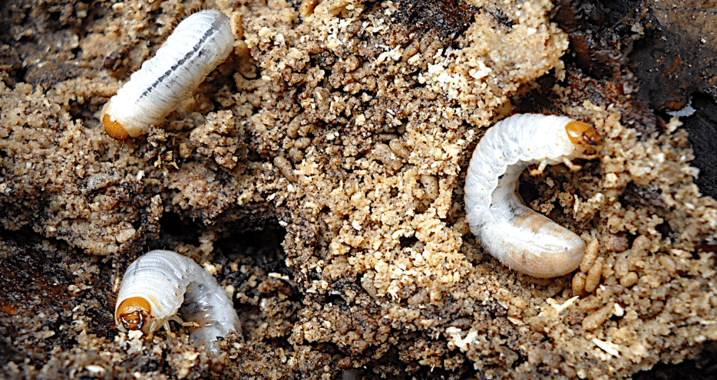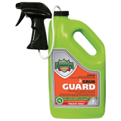
It’s that time of year again when you’re starting to spend a little more time in your yard and noticing the hum of insects surrounding your garden. While some insects serve a great purpose in keeping your outdoors alive through pollination, there are some garden creatures we could do without!
Let’s Talk Root Feeding Grubs
In late spring, root feeding grubs (lawn beetle larvae that feed on lawn roots) start to become more active. They’re now at the juvenile stage of their lifecycle and easy to spot: cream or white coloured bodies, a distinct curled shape, and brown head, though you may have to dig a little into your soil to uncover them – the colder it is, the deeper you’ll find them. They are also referred to as white curl grub, cockchafer or the larvae of black, scarab, lawn or Christmas beetle.
Because they feed on lawn roots and plant material, they can cause serious problems for some lawns, especially Fescue, Kikuyu and Couch, as well as under-nourished lawns.
An adult beetle is black and shiny. If spotted, it’s best to give them the old boot, otherwise they'll simply start a new generation cycle all over again, tunnelling into your soil to lay their eggs, all through late spring and early summer.
How to Spot Root Feeding Lawn Grub Problems in Your Grass
If you see brown patches in your lawn as your grass greens up in the warmer weather, those dead patches can be due to grubs having fed and killed off your lawn. Check the turf by taking up a small piece: if it comes away easily and there are no roots, grubs will be the likely cause.
Another warning sign is grub-eating wildlife picking at your lawn – like birds or possums. They're probably digging in hunting your soil-dwelling insects and grubs. Check the type of creature they're after is an unwanted one before deciding whether to treat.
How to Get Rid of Root Feeding Lawn Grubs
These guys are best treated at their juvenile stage; so now is the time!
Because they live in your soil, you’ll need an insecticide that can be watered through your lawn and into your soil where it can reach them.
With these types of lawn grubs that lay across a period of time, you’ll need to treat existing grubs as well as their eggs or newly hatched eggs. You can use a preventative pesticide that kills grubs over a longer period of time so that when the eggs hatch they are immediately killed off. Alternatively, you can use a pest control treatment that will treat both the grub as well as any unhatched eggs.
Don’t forget to repair your dead lawn patches by replacing the turf or reseeding.
How to Prevent Root Feeding Lawn Grubs
We can’t actually control nature, but we can take precautions! Watch nearby lawns for grub problems that may migrate to your lawns. Keep an eye out for signs especially during wetter conditions. Watch the signs of spongy lawns or dead patches. Always treat immediately.
 We Recommend
We Recommend
We recommend Lawn Lovers Grub Guard for most lawn grubs, treating both the grub and their eggs. Buy it online here: http://shop.greenlifeturf.com.au/products/lawn-lovers-grub-guard-2lt?variant=25864605955
Need Help?














